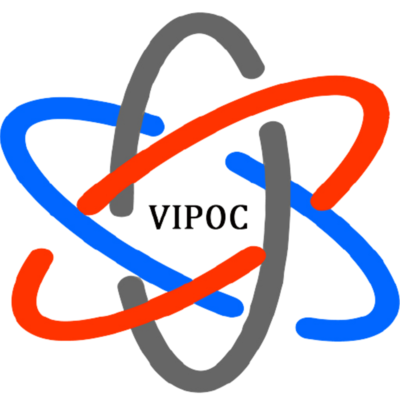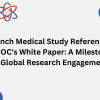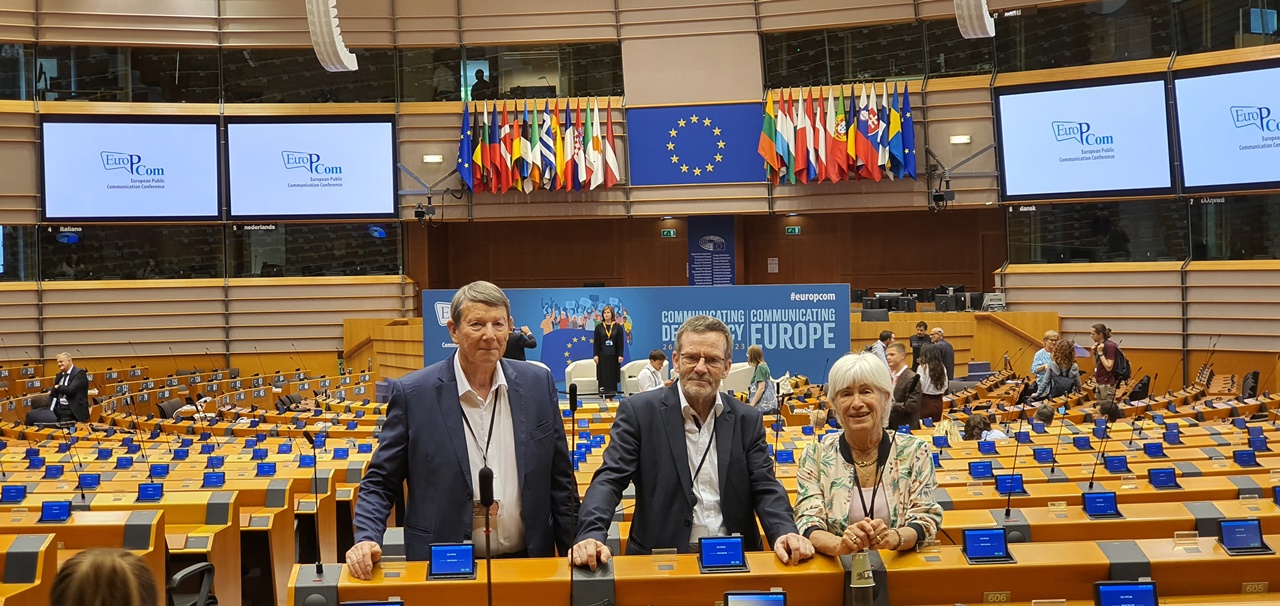
For the first time, we gathered 13 representatives from European vitiligo organizations in Brussels, the capital of Europe. This gathering was our way of participating in World Vitiligo Day, which is held every year on the 25th of June. Gaone Matewa, our VIPOC President from South Africa, joined us online during these three days, and Steve, a VIPOC board member from the USA, also joined online to celebrate WVD 2023 with Pr Amit Pandia from the Global Vitiligo Foundation.
Our main objective was to gather information, data, and advocacy items from our European members to see what could be done at the European level. We aimed to provide information to European stakeholders to make them aware of the needs of people living with vitiligo and, at the same time, include vitiligo in EU research funding.
This meeting offered us a fantastic opportunity to build stronger advocacy and recognition for vitiligo patients by the Members of the European Parliament (MEP) and other European stakeholders such as The Parliament Magazine, European Patients Forum, and Mental Health Europe (MHE).
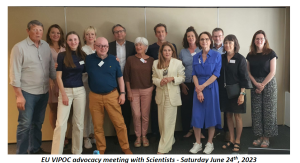
Vitiligo is a real disease.
There is no doubt among our participants that vitiligo is a real disease. However, in Sweden, vitiligo is still not considered a disease, but only a cosmetic disorder or condition, similar to Germany two years ago. This classification implies fewer chances of receiving treatment.
Challenges faced by people living with vitiligo:
– Discrimination
– Enormous impact on mental health
– Low self-esteem, anxiety, depression. A recent study shows that around 25% of vitiligo patients have suffered from suicidal ideation.
– More visibility issues for people with dark skin, and in some cultures, difficulty in getting married due to societal beliefs.
– Avoidance of outdoor activities and certain sports (such as swimming)
– Impact on sexuality
– Anxiety and concerns among affected siblings and parents, sometimes even more than the patient themselves
– Fear of having children with vitiligo, leading to reluctance to start a family
– Harassment and bullying faced by children and youth
– Use of makeup to conceal vitiligo
Prevalence of the disease:
A recent study called “All Colors, All Skins, All Dermatoses,” conducted by Pr Julien Senechal in collaboration with Pierre Fabre Laboratories, surveyed 5,000 people worldwide over three years. This project aims to provide a snapshot of the prevalence of skin diseases and their consequences. However, no study has simultaneously evaluated the worldwide prevalence of vitiligo.
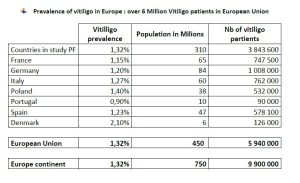
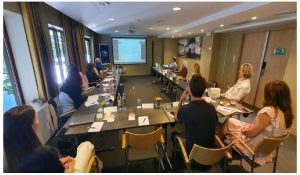
New treatment, new medicine – OPZELURA
Current situation in different countries:
– Increasing advertising for “miracle” products to treat vitiligo on the internet
– Limited information about Opzelura, and some incorrect information about its side effects, causing anxiety among people
– Some doctors have advised their patients not to use Opzelura, emphasizing the need for accurate information about the medicine
– Inequality in access to the new treatment. Germany already has access, while other countries will have to wait longer
– Uncertainty about the price or reimbursement of the treatment, which is the responsibility of national health authorities in agreement with politicians, regulators, healthcare professionals, and patient representatives
Phototherapy:
Following Pr Bekkenk’s presentation about the benefits and outcomes of phototherapy (narrow band UVB), we identified similar needs but different situations depending on the country:
– Treatment-related constraints: transportation and time for all of us
– Varied situations regarding reimbursement
– Difficulty finding clinics with the right equipment in Macedonia and Serbia, poor equipment in Sweden, and a decline in phototherapy devices in France
– Home phototherapy could be a better option if the cost is not too high
Sun protection:The need for sun protection is very high, but none of these products are reimbursed.
The Doctors
Additionally, doctors do not always have a holistic view of the disease and fail to investigate comorbidities often associated with vitiligo, such as alopecia, thyroid dysfunction, and diabetes. Some doctors do not adequately address the psychological impact or burden of vitiligo and fail to provide sufficient information about the disease and its treatments.
Collaboration with pharma industries/laboratories and researchers:
Our participants expressed the need for better relations with pharmaceutical industries at the national level. They also emphasized the need to improve scientific knowledge, remain independent from the pharma industries, and avoid conflicts of interest. More attention towards patients from pharma industries (patient centricity) and increased involvement in clinical trials and scientific studies were recommended. Research budgets are increasing, and there is a need for more research at the EU level.
Data and registries:
– Lack of a registry in Macedonia, resulting in unknown prevalence. The same situation exists in Sweden.
– Necessity to have data involving family members as well
– Netherlands is developing an app for this purpose
– Need for data at the European level, requiring more information from other European countries
Recommendations (Guidelines) – Pr Nanja Van Geel:
The Vitiligo Task Force is currently updating the “Recommendations for the Management of Vitiligo,” which will be published soon. The participation of patients in the writing of these new recommendations was particularly important.
WORKSHOP Vital focus group:
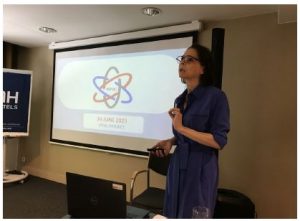
After Pr Nanja Van Geel’s presentation, we participated in a workshop on repigmentation. We discussed what, when, and how patients perceive their repigmentation (time, effects, which part of the body, etc.). Our answers will be reported for the Vital study (Vitiligo International Task force for an Agreed List of core data), which aims to establish a Core Domain Set of items to be reported in every vitiligo-related clinical trial, thus ensuring more uniformity in the collected data.
Areas of improvement and focus for collaboration:
– Advocacy for home therapy
– Collecting studies
– Strengthening relations with pharma industries
– Monthly Zoom meetings
– Developing books and comics for kids and youths
– Establishing connections with researchers, committees, psychologists, and sociologists
– Health professional education, including training for patients
– Collaboration with makeup professionals
– Creating social media groups and engaging with the media
Focus areas for advocacy, MEP, and other European health authorities:
– Recognition of vitiligo as a real disease
– Addressing the psychological impact and mental health issues
– Implementation of European projects
– Raising awareness in Europe
– Focus on kids and youth
– Promoting equality in access to medicine and democratic health policies
Interviews with representatives of European agencies, media, and Members of the European Parliament (MEP):
We conducted interviews with representatives from Mental Health Europe (MHE) and the European Patients Forum (EPF). These interviews were highly convincing, and our collaboration was strongly encouraged, particularly in the context of the Commission’s strategic plan for Mental Health. The EPF expressed interest in the participation of vitiligo patients in their “Patients” panels, which will be valuable for advocacy and awareness-raising at the European and national levels.
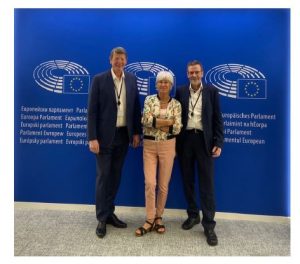
We also had an interview with The Parliament, a magazine primarily targeting professionals and political decision-makers, including Members of Parliament (MEPs). The interviewee showed interest in publishing an article on vitiligo and the challenges faced by patients, considering the new policies related to the pharma industry, equal access to medicines, and the Mental Health program.
During our visit to the European Parliament, we met with MEPs who expressed great interest in our pleas and information about the disease and its psychological impact. They were empathetic and understanding, and recommended leads towards working groups (Patients Forum) or European funds (HaDEA – European Health and Digital Executive Agency).
AND ALREADY, A BIG STEP!
A significant achievement from our intervention was securing a written question on “equal access to medicines dedicated to vitiligo in all EU member countries.” The question will be addressed by MEP Elisebeta de Blasis (Italy) to the members of the Commission, representing the 27 EU countries. This intervention at the European level is a major step towards recognition of vitiligo patients and will also impact the national level.
We extend our thanks to our speakers and organizations involved in the event, including EUPATI (European Patients Academy on Therapeutic Innovation), All Colors, All Skins, All Dermatoses project, Pierre Fabre Laboratories, and various experts who shared their knowledge and insights.
About our organizations
Our organizations play a crucial role in publishing updated information, providing advice and support to people affected by vitiligo, implementing projects, assisting other countries in creating patient organizations, advocating for awareness at national and European levels, organizing communication campaigns, maintaining close connections with doctors, researchers, and dermatological academies, participating in congresses and conferences, and seeking funding. Membership growth and engagement are ongoing challenges, and we aim to involve more new and young volunteers.
We express our gratitude to our sponsors for making the 1st World Vitiligo Day Brussels 2023 a reality. This event served as the first advocacy days for vitiligo patients and their families in Europe.”
